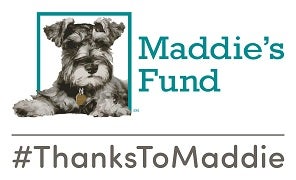
COVID Policy and Procedure Changes Worth Keeping in Place
There’s no question that the pandemic drastically changed the way that shelters do business. Staffing shortages and restrictions on public access to facilities meant organizations had to come up with new ways to still serve the animals and residents in their communities while keeping people safe. Many of these adjustments wound up saving staff time and resources and reducing stress while still leading to lifesaving outcomes for animals.
Below are some of the changes we encourage shelters to consider business as usual even after pandemic restrictions are lifted:
Community engagement: Find ways to encourage community involvement in the shelter.
- Redefine when it is appropriate for people to visit the shelter.
- Revisit requirements around volunteer programming and encourage frequent visitors to sign up for impactful volunteering opportunities.
Shelter Intake: Adjust the number of animals entering your shelter by continuing practices that will keep pets in homes—either their own or those of foster families.
- Return pets in the field in lieu of impounding them.
- Institute programming that encourages people who find stray animals to foster rather than relinquish.
- Create a foster on-call system so finders who are unable to foster can connect with other foster homes in their neighborhood.
- Field owner surrender requests through an appointment-based case management model that also offers alternatives to intake.
- Review and revise mandated intake ordinances (e.g., mandated pick-up of healthy free-roaming cats).
Field services: Animal control officers could follow a community support model rather than one founded on enforcement and punitive solutions.
- Operate under a philosophy of helping fix the problem rather than relying on citations or impoundment to change behavior (except in instances of cruelty or neglect).
- Use resources wisely to focus on priority cases.
- Continue to triage low priority/non-emergency activity in relation to real-time shelter capacity.
Positive outcomes: Take a second look at shelter policies around releasing animals and look for ways to fast-track as many animals as possible out of your facility.
- Outcome pets as “foster-to-adopt” so that they can go home with a family and be officially adopted once they return for the spay/neuter appointment or provide documentation of sterilization.
- If your organization is lacking spay/neuter resources, consider releasing unaltered animals with a list of low-cost spay and neuter services available in the community.
- Eliminate practices that are time-consuming, serve as roadblocks to adoption or are not relevant to successful placement of a pet into a new home (e.g., home checks, landlord/vet checks, required in-person meet and greets of all people/all animals in household).
Client services: Make a high level of efficient customer service part of your mission and practices.
- Concierge-level services for the public, such as an appointment system for intakes and adoptions, can help shelters provide better, more efficient customer service. However, they shouldn’t entirely replace walk-in services.
- Encouraging people to visit the shelter, particularly for weekend adoption events, has helped a lot of shelters move more animals as COVID-related restrictions have eased but capacity struggles/staffing shortages persist.
- Utilize online/self-service portals to streamline access to specific services (e.g., license applications and renewals).
- Continue allowing fosters to market and adopt out their foster animals.
Quality of care: Recognize that even the best housing, care and enrichment programs in a shelter are not as good as caring for an animal in a home and look for avenues to fast-track animals as frequently as possible.
- Prioritize opportunities for in-home care experiences over shelter housing (e.g., simplify requirements for foster-to-adopt programs or same-day fostering).
Rather than going back to the way things have always been done, shelters that made the above tweaks to their processes—and even shelters that didn’t—should make them the new way of doing business. Though shelters were forced to make such adjustments due to a crisis, it’s time to embrace how they resulted in positive gains for animals, organizations and the public and moved the industry a step closer to a time of community-supported sheltering.


